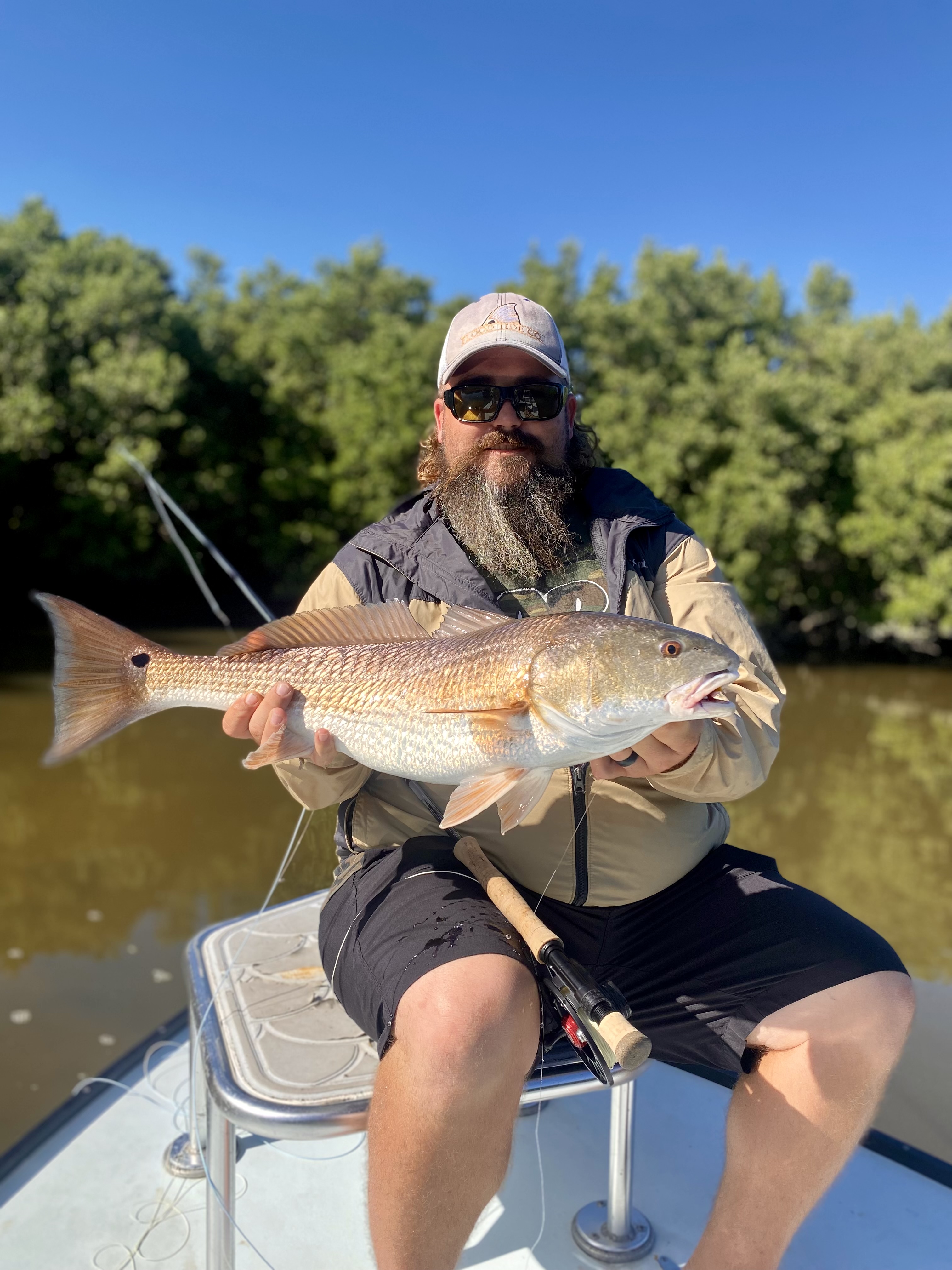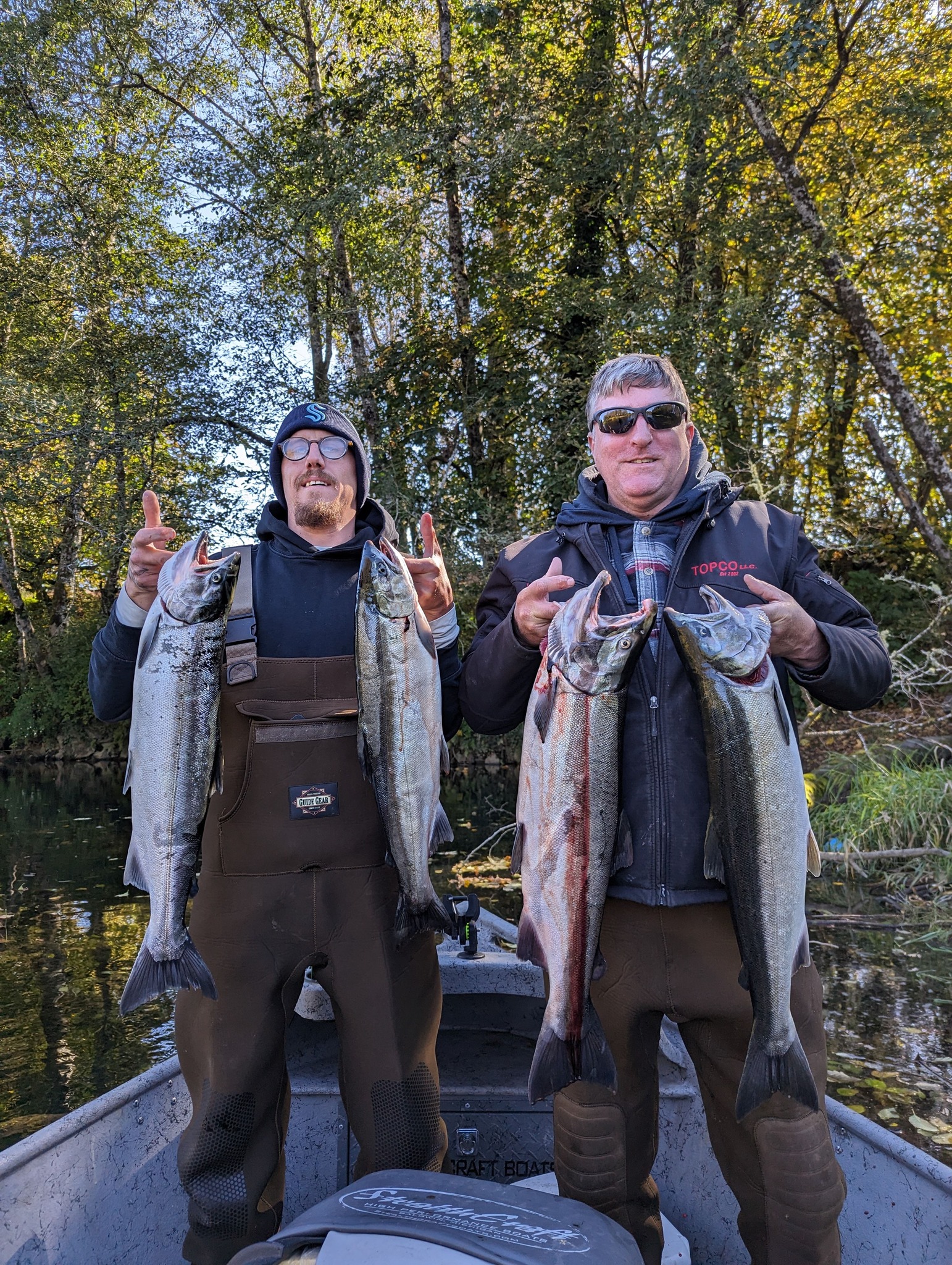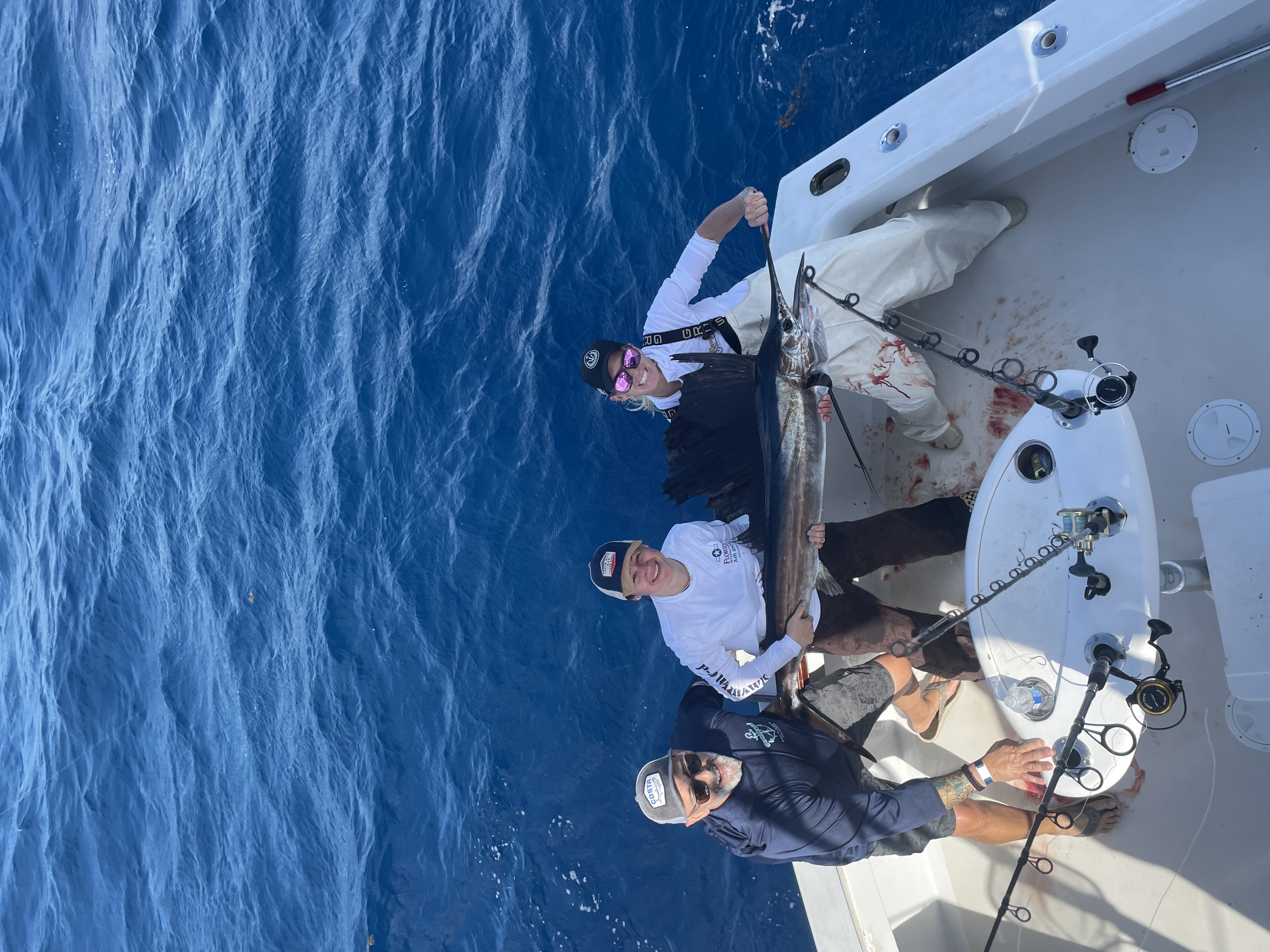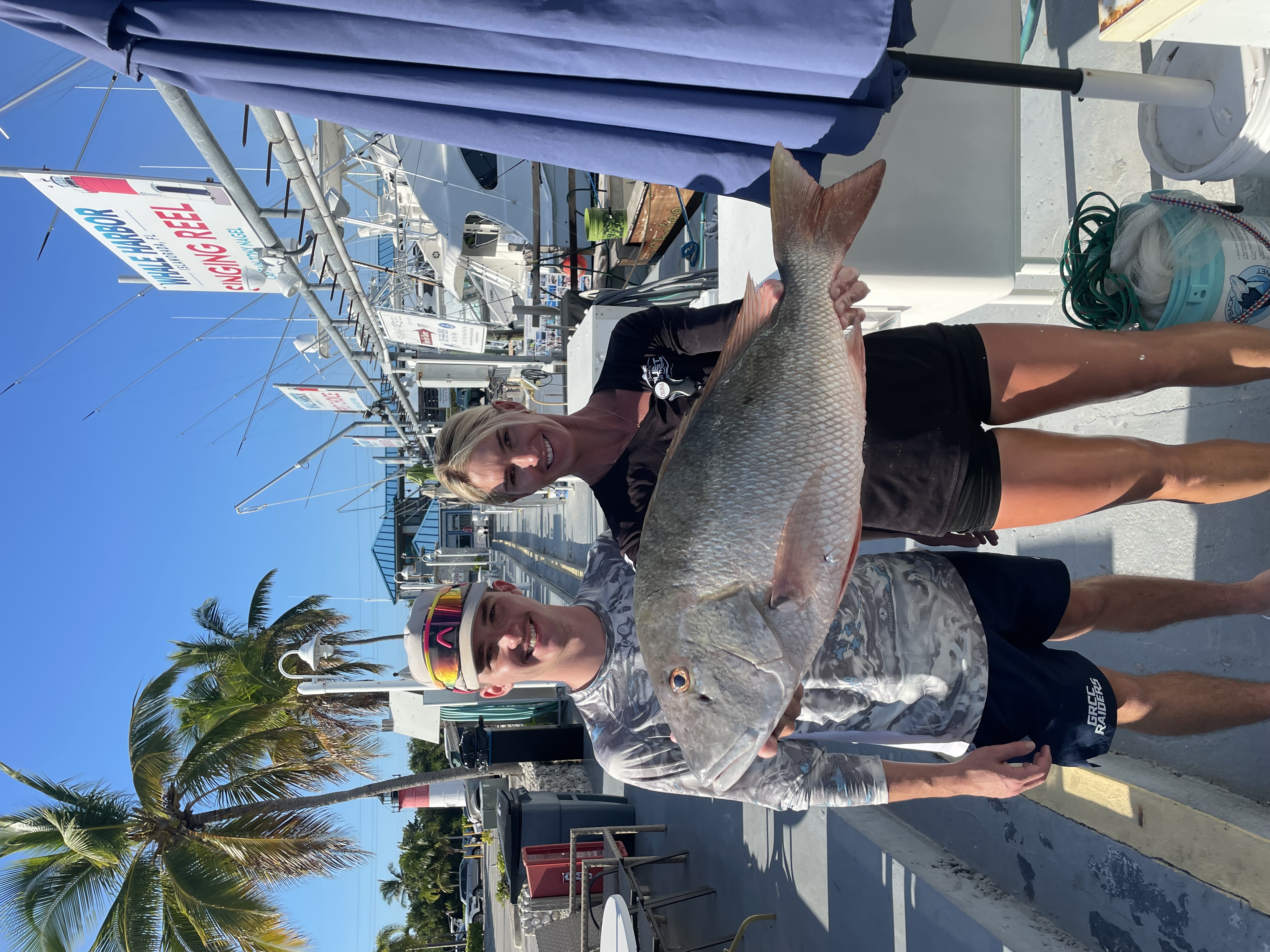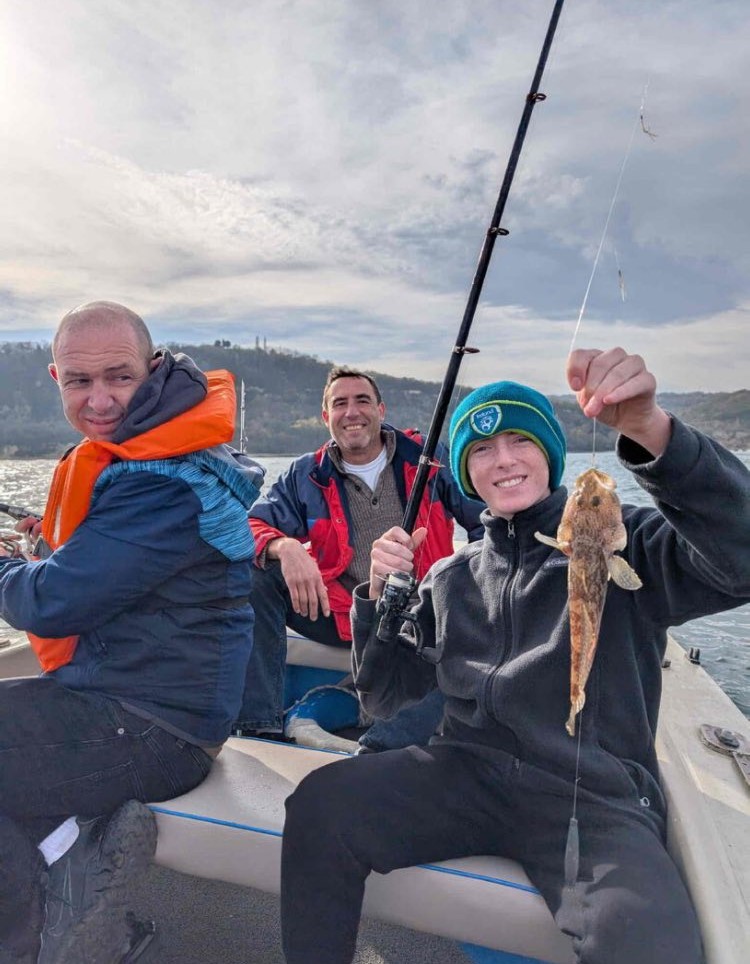Inshore, Flats Fishing in Pineland
Fly Fishing Pineland
Inshore Fishing in Mount Pleasant
Gigging Trip
Salmon Fishing Trip
Steelhead Fishing Trip
Deep Sea, Nearshore Fishing in Puerto Aventuras
Fishing Charter, Puerto Aventuras
Deep Sea, Nearshore Fishing in Islamorada
4 Hour Half Day
Deep Sea, Nearshore Fishing in Islamorada
6 Hour 3/4 Day
Black Sea Trips
Deep Sea, Nearshore Fishing in Sarasota
Red Snapper December Re-Open
Winter Steelhead
We started Captain Experiences to make it easy to book fishing and hunting guides around the world. With over 2,000 Damn Good Guides, our platform makes finding and booking a trip seamless. Head here to check out our trips.
Update: See below for Discounted Catch and Release Fishing Trips
Capt. Mike Meza of Galveston, TX
Capt. Mike Cybak of Galveston, TX
Capt. Rick Conner of Matagorda, TX
Capt. Sid Halliday of Matagorda, TX
Capt. Larry Bell of Aransas Pass, TX
Winter Storm Uri & The Texas Fish Freeze
When Winter Storm Uri came crashing down on Texas in February 2021, many Texans, regardless of their species, were caught off guard.
While we humans hunkered down with no electricity, water, or navigable roads, our coastal neighbors including fish, birdlife, and sea turtles were also caught in the freezing cold crosshairs with nowhere to go.
News outlets around the world featured headlines on the effects of this storm on our human society, but what about the lasting natural effects on our ecosystems and the wildlife they host?
Winter Storm Uri brought such low and sustained temperatures on the Texas coast that it caused a “fish freeze” killing an untold number of wildlife.

Photo of Copano Bay from Daniel Sampeck.
At Captain Experiences, we’re doing our small part to raise awareness to Help Bring Texas Fisheries Back.
We’re committing 5% of our profits from 2021 Texas inshore fishing trips and $5 per social media share of our Help Bring Texas Fisheries Back campaign to support the rebounding of Texas inshore gamefish populations. You can learn more about our campaign from KXAN Local News here.
Lay of the Land:
1. Latest Updates from Texas Parks & Wildlife Division
2. The Makings of Winter Storm Uri
3. Effects on the Texas Coastal Ecosystem
4. Historical Context of Winter Storm Uri
5. Help Bring Texas Fisheries Back
Latest Fish-Freeze Updates
A few weeks after Winter Storm Uri swept across the state, Texas Parks & Wildlife Division released the results from their fish kill study. After conducting in-depth research across the Texas coast, they found that at least 3.8 million fish were killed by the freeze.
91% of these fish were non-recreational species, and the most affected bay systems were the Upper and Lower Laguna Madre.
Of the 9% of recreation species killed, almost half were speckled trout. Black drum accounted for 31%, while redfish only amounted to 3%. Of the total speckled trout loss, 89% occurred in the Upper and Lower Laguna Madre.
While this fish kill event is tragic, the total loss is far less than those of '83 and ‘87 where almost 32 million fish perished. Looking back to the 80’s, it took around 2-3 years for the total number of fish lost to recover.
While it seems like we dodged a bullet, baitfish populations took a major hit which has major ramifications for the fishery. We highly recommend all anglers practice catch and release, but doing is especially imperative for speckled trout due.
It’s important as ever to practice conservation-minded fishing habits. Whether it’s catch & release, or keeping just a few fish, everything helps.
The Makings of Winter Storm Uri

Winter Storm Uri as seen from space. Photo from NASA EOSDIS Worldview.
On Saturday February 13th, 2021, a low-pressure storm system developed off the coast of the Pacific Northwest and moved onshore over the Rocky Mountains. The storm immediately caught the attention of The Weather Channel, earning the name “Winter Storm Uri”.

The formation of Winter Storm Uri taking place off the coast of the Pacific Northwest. Graphic from NOAA.
By Sunday, February 14th, Valentine's Day, Uri had already made it to Texas' doorstep- over 170 million Americans (over half the U.S. population) were placed under weather alerts across the country, and Texans braced for impact.

Winter Storm Uri gaining steam over the Four Corners Area of Utah, Arizona, Colorado, and New Mexico. Graphic from NOAA.
Uri over Texas

Winter Storm Uri unleashes snow and low temperatures not experienced in Texas since the 1980's. Graphic from NOAA.
On the night of Valentine’s Day and throughout Monday, February 15th, Uri unleashed freezing cold temperatures and inches of snow blanketing Texas from Amarillo to Arroyo City, El Paso to the land of El Tiempo.

Uri was here: view I woke up to on the morning of Mon. 2/15 in Austin, TX.

Austin, North Dakota.

Austin covered in snow on Monday, Feb. 15th. According to TPWD, Speckled Trout can survive temps in the mid-thirties while Redfish can survive up to 40 degrees fahrenheit. Graphic from NOAA.
While some initially enjoyed some fun in the snow, things turned south as the Texas power grid failed, water shut off, pipes burst, roads iced, restaurants and stores shuttered, etc. Winter Storm Uri was officially a crisis.
Effects on the Texas Coastal Ecosystem
The term fish kill refers to a die-off of fish populations which may also be associated with a broader die-off of aquatic life at-large. Fish kills can stem from a variety of causes including reduced oxygen levels, infectious diseases, toxicity, red tides, and more.
Because cool water temperatures have the potential to hold higher oxygen levels than warm water temperatures, fish kills caused by drastic swings in temperature frequently occur as water temperatures rise and remain at elevated temperatures.
When fish die off due to cooling water temperatures, it is not a lack of oxygen that does the damage. Rather, it's the fact that the fish species simply cannot sustain life and activity at such low temperatures- their bodies begin conserving energy and heat and do not expend the energy necessary to feed.
Different fish species have different temperature thresholds. According to TPWD, Speckled Trout and Redfish have a similar capability to tolerate cold water temperatures.
According to TPWD, Speckled Trout lose their equilibrium in water at about 43 degrees fahrenheit, but don't necessarily die until temps dip into the mid-thirties. Redfish are slightly less tolerant, dying off when the water gets below about 40 degrees fahrenheit.
This is interesting in that most anglers believe Redfish to be the heartier of the species- but when it comes to water temperatures, Speckled Trout can survive in the 30's whereas the floor for Redfish is 40 degrees fahrenheit.
Winter Storm Uri's Fish Kill
Initial reports from the Texas Coast show that the vast majority of affected (dead) fish species are smaller, younger baitfish that are less defiant when it comes to colder water temperatures.

A photo of the fish kill showing mostly baitfish near Port Aransas / Aransas Pass. Please contact us for photo credit.
Furthermore, out of the gamefish species of Speckled Trout, Redfish, Black Drum, Sheepshead, Tarpon, and Snook, Speckled Trout appear most prevalent in photos of dead fish carcasses littering the shorelines of the Texas Coastal Bend.

Frozen Speckled Trout. Photo from TPWD.
One theory for this is that Speckled Trout are, on average, the lightest of these gamefish species, meaning that they float most easily and add to the density of the fish kill shorelines.
On the other hand, mature, heavy Speckled Trout and those of other fish species congregate on the bottoms of affected areas because they're too heavy to float to the surface. This is an ominous theory in that, if true, it would mean that the fish kills along the beaches are just the tip of the iceberg and there's plenty more large fish waiting for temperatures to increase before revealing themselves.
Update (Feb. 24th): "All Floating"
Captain Larry of Aransas Pass returned yesterday from one of our catch and release trips with Ken (thanks for booking with us Ken!) and shared their report:
29", 28", 26", and 25" Speckled Trout, All Floating



Reports like this are becoming more and more prevalent as water temperatures increase and heavier gamefish surface...
There is hope though-per TPWD, the initial assessments indicate the majority of fish impacted were non-recreational species including pinfish, spot, silver perch, gulf menhaden, mullet and other forage fish. "Recreationally important species that have been seen include spotted seatrout, sheepshead, grey snapper, snook, and tarpon. Proportionally, these species accounted for less than 10% (by number) of the total mortality event."
Go Low
Texans are resilient, and many of our inshore fish species along the coast are able to withstand dramatic drops in water temperatures. Their first line of defense? Evacuating exposed shallow water flats and bay systems for insulated dredges, channels, and open water.

Water temperatures along the Texas Coast on Monday, Feb. 15th. According to TPWD, Speckled Trout can survive temps in the mid-thirties while Redfish can survive up to 40 degrees fahrenheit. Graphic from NOAA.
Unfortunately, many of our Texas inshore bay systems do not offer significant access to deeper water. This fact helps explain that while water temps were relatively consistent across the Texas Coast, the initial fish kill seems to have disproportionately affected Middle Coast and Lower Coast Fisheries.
Per TPWD on Sunday, Feb. 21st, the six bay systems most impacted by the fish kill event are Matagorda Bay, San Antonio Bay, Aransas Bay, Corpus Christi Bay, the Upper Laguna Madre, and the Lower Laguna Madre.
That about runs the gamut of major Texas inshore fisheries aside from the Galveston Bay Complex which seems to have (relatively) dodged a bullet thanks to more immediate deepwater access. Fish populations likely sought shelter in deeper waters via the mouth of the Houston Ship Channel, San Luis Pass, the dredged Houston Ship Channel itself, and the fact that the Galveston Bay Complex is naturally deeper than most other Texas inshore bay systems.
Historical Context of Winter Storm Uri

A photo from Corpus Christi during the fish freeze of 1983. Please contact us for photo credit.
While a bit before our time, Old Salts immediately recall the fish freezes of 1989 and 1983 as the most direct historical comparables for what we're experiencing today.
In December of 1983 and 1989 temps reached as low as 14 and 13 degrees, respectively. Those fronts resulted in an estimated 25 million dead fish combined.
While the temps didn’t get that low this time around, the jury's still out on how this fish kill compares in terms casualties.
Lesson Learned
During the cold snaps of the 80’s, the fish kills were worsened by those who chose to catch vulnerable, cold-stunned fish while fish populations sought safe harbor from the weather. TPWD reacted fast and closed fishing in many areas along the coast when the temperature dropped below freezing.
This time around, TPWD returned to the same playbook. In order to curb additional pressure on the fish during the cold snap, TPWD closed down shallow inshore areas to fishing and the surrounding deeper basins where fish are most likely to congregate. Although deep water provides an escape from the freeze, the fish are still stunned and sluggish from the cold, making them more prone to capture.
Help Bring Texas Fisheries Back
So while the jury's still out on the numbers, the qualitative assessment is a closed case: the 2021 Texas fish kill is historically devastating.
While initial analysis from TPWD states that recreationally important species including spotted seatrout, sheepshead, grey snapper, snook, and tarpon accounted for less than 10% (by number) of the total mortality event, the effects on baitfish and other coastal wildlife will reverberate throughout the ecosystem. This 10% is also by number- by biomass, the percentage of recreationally important species is sure to be much, much higher. Lastly, these numbers are based on initial analysis and do not include heavier gamefish that are just now surfacing.
Lend a Hand
In the wake of this natural disaster, the Texas fishing community is banding together. We've included a few resources below to help our fisheries rebound faster than ever:
Help Bring Texas Fisheries Back
In response to the widespread fish kills, we at Captain Experiences launched our "Help Bring Texas Fisheries Back" campaign to raise awareness and funding for TPWD and CCA Texas coastal hatchery efforts. These hatcheries will help replenish gamefish populations throughout the Texas Coast.
Captain Experiences will donate 5% of all Texas inshore fishing trip profits to these efforts. We are also committing $5 per social media share of our campaign- please share here to join in!
The Bite Me Labor Day Challenge

Thank You to Captain Scott Null and John Lopez of Sports Radio 610 for using their platform, The Bite Me Saltwater Fishing Podcast (available on iTunes, Spotify, etc.), to help educate the public on these issues. If you haven't already, we highly suggest you subscribe to their podcasts, start listening today, and join the Facebook group here!
In addition, John Lopez announced the Bite Me Labor Day Challenge, encouraging anglers to join him in practicing strict catch and release only fishing until Labor Day, Sept. 4th, 2021.
Speckled Truth & Release Over 20

Speckled Truth & Release Over 20 are offering free decals to raise awareness for catch and release fishing through the end of 2021. The groups states, "this gives our fish a chance to contribute to the future of the fishery. It's a mindset of fishery first."
Empty Stringers Catch and Release Program

The Empty Stringers program was thought of by Captain Ernest Cisneros of Brownsville, Texas and Captain Wayne Davis of Port Mansfield, Texas to help conserve the fishery along the Texas Coastal waters where they has been guiding bay fishing trips for many years.
In response to the recent fish kill, Empty Stringers stated, "With all the focus on the Texas Saltwater Fishery since the freeze of 2021, we might think about what #emptystringers means. It doesn't mean releasing every fish, it doesn't mean we should stop fishing and it doesn't mean people who keep their respectable limit are bad. It simply means - practice good stewardship of the resource. Remember this - short term gratification can lead to long term consequences."
Amen!
Catch and Release Fishing & Looking Ahead
Texas inshore fisheries need our help bouncing back from this devastating fish kill. Our bay systems are under more pressure than ever as the sport of fishing gains in popularity, a trend that is compounded by the COVID-19 pandemic as more Americans rush to enjoy the outdoors.
At Captain Experiences, we believe introducing more anglers to the sport is good for conservation- if more people learn to enjoy our natural resources, they'll learn to respect and protect them as long as they understand how.
It is important more than ever to practice catch and release fishing so that we don't further decrease gamefish populations. We've shared a few catch and release tips below, and you can view our recent interview with Austin's KXAN News on CPR (Catch, Photo, Release) fishing here.
Catch and Release Fishing Tips
-Wet hands (and remove gloves) prior to handling fish.
-Support fish horizontally as opposed to vertically. Fish swim horizontally and anglers can cause internal damage by holding fish upright by the jaw.
-Do not insert hands into the gills of fish.
-Keep 'Em Wet: keep fish in the water or take fish out of the water for just a few seconds for a quick picture.
-To ensure fish swim off with enough strength, hold the tail of the fish firmly and glide the fish back and forth in the water. This will allow oxygenated water to flow through the fish's gills, revitalizing it until it is strong enough to escape your grip on its way to living a healthy life, spawning, and maybe being caught and released by another angler who will thank you in anonymity.
//
Note: We will continuously update this blog as we receive more information from our guides. We will also be adding a list of discounted catch and release guided trips. Lastly, please feel free to share feedback with us here or on Facebook here.
Jonathan Newar
Updated on November 15, 2023

January 7, 2022

November 7, 2023

April 15, 2022

August 21, 2023

June 3, 2021
Related Articles
January 30, 2021
October 10, 2022
April 27, 2022
Featured Locations
- Fishing Charters Near Me
- Austin Fishing Guides
- Biloxi Fishing Charters
- Bradenton Fishing Charters
- Cabo San Lucas Fishing Charters
- Cancun Fishing Charters
- Cape Coral Fishing Charters
- Charleston Fishing Charters
- Clearwater Fishing Charters
- Corpus Christi Fishing Charters
- Crystal River Fishing Charters
- Dauphin Island Fishing Charters
- Daytona Beach Fishing Charters
- Destin Fishing Charters
- Fort Lauderdale Fishing Charters
- Fort Myers Fishing Charters
- Fort Walton Beach Fishing Charters
- Galveston Fishing Charters
- Gulf Shores Fishing Charters
- Hatteras Fishing Charters
- Hilton Head Fishing Charters
- Islamorada Fishing Charters
- Jacksonville Fishing Charters
- Jupiter Fishing Charters
- Key Largo Fishing Charters
- Key West Fishing Charters
- Kona Fishing Charters
- Lakeside Marblehead Fishing Charters
- Marathon Fishing Charters
- Marco Island Fishing Charters
- Miami Fishing Charters
- Montauk Fishing Charters
- Morehead City Fishing Charters
- Naples Fishing Charters
- New Orleans Fishing Charters
- New Smyrna Beach Fishing Charters
- Ocean City Fishing Charters
- Orange Beach Fishing Charters
- Panama City Beach Fishing Charters
- Pensacola Fishing Charters
- Pompano Beach Fishing Charters
- Port Aransas Fishing Charters
- Port Orange Fishing Charters
- Rockport Fishing Charters
- San Diego Fishing Charters
- San Juan Fishing Charters
- Sarasota Fishing Charters
- South Padre Island Fishing Charters
- St. Augustine Fishing Charters
- St. Petersburg Fishing Charters
- Tampa Fishing Charters
- Tarpon Springs Fishing Charters
- Venice Fishing Charters
- Virginia Beach Fishing Charters
- West Palm Beach Fishing Charters
- Wilmington Fishing Charters
- Wrightsville Beach Fishing Charters


